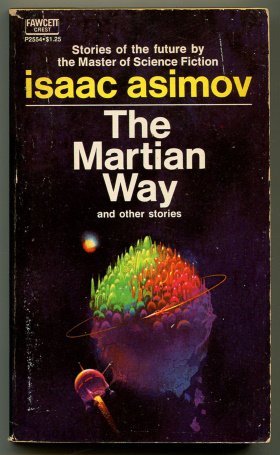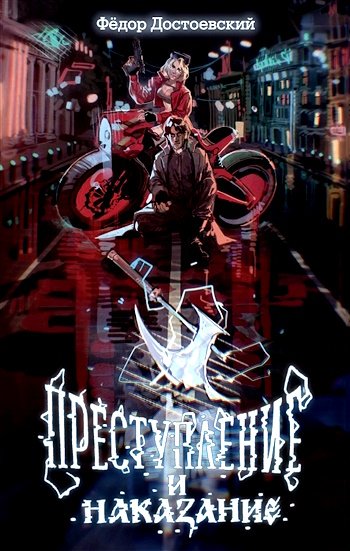‘How many in your crew, Captain?’ asked Vemadsky, as he looked over ship’s papers.
The captain said, ‘Tho. Now how about looking over the hyper-atomics? We’ve got a shipment to make.’ His cheeks were blue with dark stubble, his bearing that of a hardened and lifelong asteroid miner, yet his speech was that of an educated, almost a cultured, man.
‘Sure.’ Vemadsky lugged his diagnostic kit to the engine room, followed by the captain. He tested circuits, vacuum degree, forcefield density with easy-going efficiency.
He could not help wondering about the captain. Despite his own dislike for his surroundings he realized dimly that there were some who found fascination in the vast emptiness and freedom of space. Yet he guessed that a man like this captain was not an asteroid miner for the love of solitude alone.
He said, ‘Any special typ of ore you handle?’
The captain frowned and said, ‘Chromium and manganese.’
‘That so? . . . I’d replace the Jenner manifold, if I were you.’
‘Is that what’s causing the trouble?’
‘No, it isn’t. But it’s a little beat-up. You’d be risking another failure within a million miles. As long as you’ve got the ship in here—’
‘All right, replace it. But find the stutter, will you?’
‘Doing my best, Captain.’
The captain’s last remark was harsh enough to abash even Vemadsky. He worked awhile in silence, then got to his feet. ‘You’ve got a gamma-fogged semirefl.ector. Every time the positron beam circles round to its position the drive flickers out for a second. You’ll have to replace it.’
‘How long will it take?’
‘Several hours. Maybe twelve.’
‘What? I’m behind schedule.’
‘Can’t help it.’ Vemadsky remained cheerful. ‘There’s only so much I can do. The system has to be flushed for three hours with helium before I can get inside. And then I have to calibrate the new semirefl.ector and that takes time. I could get it almost right in minutes, but that’s only almost right. You’d break down before you reach the orbit of Mars.’
The captain glowered. ‘Go ahead. Get started.’
Vemadsky carefully maneuvered the tank of helium on board the ship. With ship’s pseudo-grav generators shut off, it weighed virtually nothing, but it had its full mass and inertia. That meant careful handling if it were to make turns correctly. The maneuvers were all the more difficult since Vemadsky himself was without weight.
It was because his attention was concentrated entirely on the cylinder that he took a wrong tum in the crowded quarters and found himself momentarily in a strange and darkened room.
He had time for one startled shout and then two men were upon him, hustling his cylinder, closing the door behind him.
He said nothing, while he hooked the cylinder to the intake valve of the motor and listened to the soft, soughing noise as the helium flushed the interior, slowly washing absorbed radioactive gases into the all-accepting emptiness of space.
Then curiosity overcame prudence and he said, ‘You’ve got a silicony aboard ship, Captain. A big one.’
The captain turned to face Vemadsky slowly. He said in a voice from which all expression had been removed, ‘Is that right?’
‘I saw it. How about a better look?’
‘Why?’
Vemadsky grew imploring. ‘Oh, look, Captain, I’ve been on this rock over half a year. I’ve read everything I could get hold of on the asteroids, which means all sorts of things about the siliconies. And I’ve never seen even a little one. Have a heart.’
‘I believe there’s a job here to do.’
‘Just helium-flushing for hours. There’s nothing else to be done till that’s over. How come you carry a silicony about, anyway, Captain?’
‘A pet. Some people like dogs. I like siliconies.’
‘Have you got it talking?’
The captain flushed. ‘Why do you ask?’
‘Some of them have talked. Some of them read minds, even.’
‘What are you? An expert on these damn things?’
‘I’ve been reading about them. I told you. Come on, Captain. Let’s have a look.’
Vernadsky tried not to show that he noticed that there was the captain facmg him and a crewman on either side of him. Each of the three was larger than he was, each weightier, each – he felt sure – was armed.
Vemadsky said, ‘Well, what’s wrong? I’m not going to steal the thing. I Just want to see it.’
It may have been the unfinished repair job that kept him alive at that moment. Even more so, perhaps, it was his look of cheerful and almost moronic innocence that stood him in good stead.
The captain said, ‘Well, then, come on.’
And Vemadsky followed, his agile mind working and his pulse defimtely quickened.
Vemadsky stared with considerable awe and just a little revulsion at gray creature before him. It was quite true that he had never seen a silicony, but he had seen trimensional photographs and read descriptions. Yet there 1s somethmg in a real presence for which neither words nor photographs are substitutes.

























